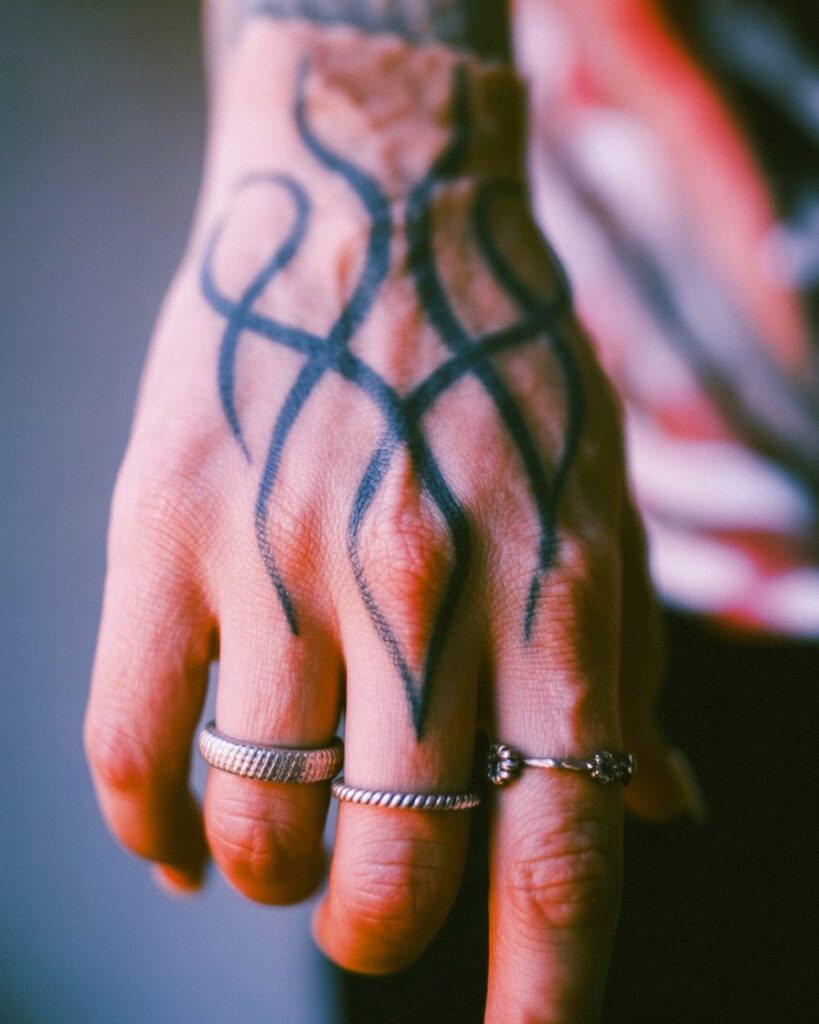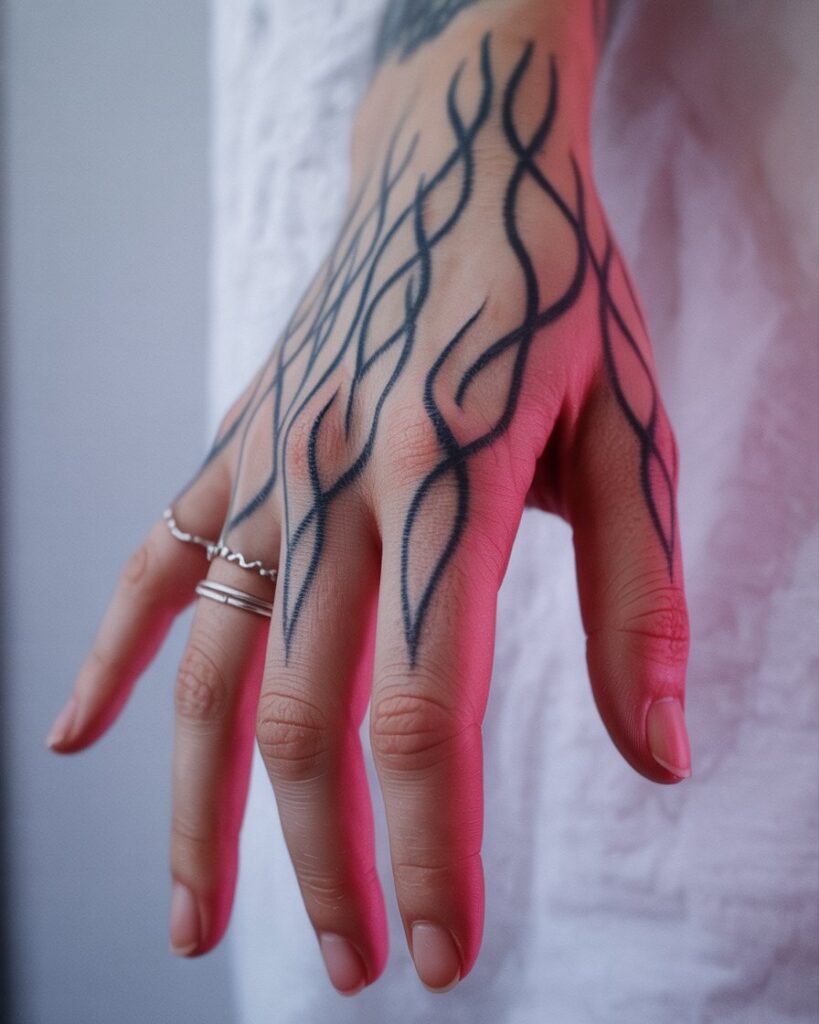In the ever-evolving landscape of personal expression, hand tattoos have emerged as one of the most powerful and visually striking statements one can make. The resurgence of linear, geometric designs flowing across the metacarpals represents more than just aesthetic appeal—it embodies a fascinating blend of cultural heritage and contemporary identity.
The Revival of Linear Hand Art
The image of dark, flowing lines cascading across the back of the hand has become increasingly prominent in modern tattoo culture. These designs, characterized by their intricate pathways and organic symmetry, create a visual map that transforms the hand into a canvas of personal significance.
“Hand tattoos occupy a unique space in body art,” notes tattoo anthropologist Dr. Eliza Thornton. “They exist at the intersection of visibility and vulnerability—always exposed, constantly in motion, and impossible to conceal in daily interactions.”
This permanence and visibility make the decision to adorn one’s hands particularly meaningful. Unlike tattoos that can be hidden beneath clothing, hand tattoos announce themselves in every handshake, gesture, and interaction.
Symbolic Lineage and Modern Interpretation
The geometric patterns commonly seen in contemporary hand tattoos often draw inspiration from various cultural traditions:
- Celtic knotwork, representing interconnectedness and eternity
- Nordic binding runes, symbolizing protection and strength
- Polynesian tribal designs, traditionally signifying status and identity
- Minimalist interpretations of natural elements like water, fire, and wind
What makes today’s trend distinctive is the reinterpretation of these ancient symbols through a minimalist lens—fine lines, negative space, and asymmetrical balance create designs that feel both timeless and distinctly modern.

The Aesthetic Movement
The visual documentation of these tattoos has become an aesthetic movement unto itself. Photographed in soft focus with warm or cool-toned lighting, often adorned with subtle jewelry, these images create a distinctive mood that has influenced fashion, design, and social media aesthetics.
The typical visual elements include:
- Soft focus or slight blur
- Warm, intimate lighting with red or blue undertones
- Complementary metallic jewelry (often silver or white gold)
- Natural skin texture and detail
- High contrast between the dark lines and skin
Practical Considerations
For those considering hand tattoos inspired by these designs:
- Placement and longevity: Hand tattoos experience significant wear due to frequent washing, sun exposure, and natural skin renewal
- Artist selection: Find artists specializing in fine line work with experience in hand tattoos specifically
- Professional considerations: While increasingly accepted, visible tattoos may still impact certain career paths
- Aging process: Understand that the crisp lines will naturally expand and fade over time, requiring potential touch-ups
Beyond Aesthetics: The Social Implications
The choice to tattoo one’s hands carries social significance beyond personal expression. As these visible tattoos become more mainstream, they challenge conventional boundaries between professional and personal identity.
“What we’re witnessing is a broader cultural shift in how we view self-expression and authenticity,” explains cultural sociologist Mira Kapoor. “The hand tattoo represents a refusal to compartmentalize different aspects of identity—it’s a statement that one’s personal aesthetic choices need not be hidden from professional contexts.”
A Personal Canvas
Whether inspired by ancient symbols, geometric precision, or purely aesthetic considerations, the hand tattoo represents one of the most personal and visible forms of self-expression. As the boundary between digital identity and physical presentation continues to blur, these permanent marks serve as anchors of individuality in an increasingly fluid world of self-representation.
The flowing lines that trace across knuckles and metacarpals tell stories that words often cannot—of personal journeys, aesthetic preferences, and the courage to make permanent what matters most to the individual wearing them.


